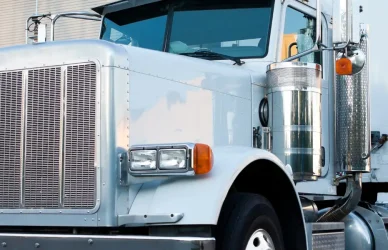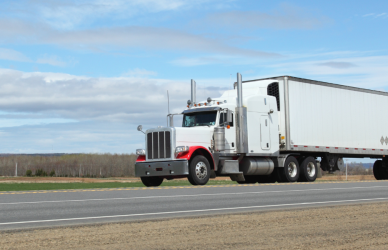Only around 18% of American drivers know how to drive a vehicle with a manual transmission, according to U.S. News and World Report. That’s not many people who can handle stomping the clutch pedal, moving the stick shift, engaging the gear, lifting the clutch, hitting the gas, and so on.
Many of the people who love the stick, grew up learning to drive on vehicles without automatic transmissions such as farm equipment or old pickups. Today, only 1% of cars produced in the U.S. have manual transmissions and only 3.7% of sales are for stick shifts. That’s versus around 35% that were produced in 1980. In Europe currently, 80% of cars sold still have manual transmissions. But what about our big trucks?
Are stick shifts in trucks going extinct?
According to truck manufacturers and suppliers, the simple answer is no.
“Manual transmissions currently continue to make up approximately 50% of the total North America Class 8 market,” said Shane Groner, director of field business development for the Eaton Vehicle Group, to American Trucker. “While that number will decline over time due to fleets transitioning to automation to enable a larger driver pool population, it is not expected that automated transmissions will fully displace manual transmissions in the foreseeable future.”
Kelly Gedert, director of product marketing for Freightliner and Detroit components told FleetOwner recently that manual transmissions will continue to be offered as they are demanded based on customer preference and type of application noting, “The use of manuals is typically dictated more by customer/driver preference than by application. In 2017, our Detroit DT12 AMT was ordered on approximately 70% of all combined Freightliner Cascadia and Western Star 5700XE on-highway models, but manuals were still ordered on 20% to 25% of all transmissions sold in all Freightliner and Western Star models last year.”
Volvo Trucks North America has the same take. Volvo’s Product Marketing Manager–Powertrain, John Moore, told FleetOwner that manual transmissions aren’t going the way of the dinosaur just yet. Moore thinks it will be “quite some time” before manual transmissions are completely replaced by automated manual transmissions (AMT) and fully automatic gearboxes simply because of customer preference.
“Despite its prevalence in 90% percent of all trucks we build, not everyone has bought into the revolution for various reasons,” Moore noted. “Some drivers just like to shift.”
Why do some car drivers still prefer manual transmissions?
For one, your car is less likely to get stolen because thieves are as incapable of using a clutch as any other typical American. There have been multiple reports over the past year of carjackers unable to drive away.
Manual-transmission cars are easier and cheaper to repair. Although the latest automatic transmissions are more fuel-efficient than older versions, Consumer Reports suggests that manual transmissions can improve gas mileage by 2 to 5 miles a gallon, partly from the decreased weight of the car. The purchase price of a new car often runs $800 to $1,000 lower.
Using a manual transmission might improve some drivers’ focus. A study from the National Institutes for Health found that manual transmissions enhance the attention and driving performance of adolescent males with ADHD.










